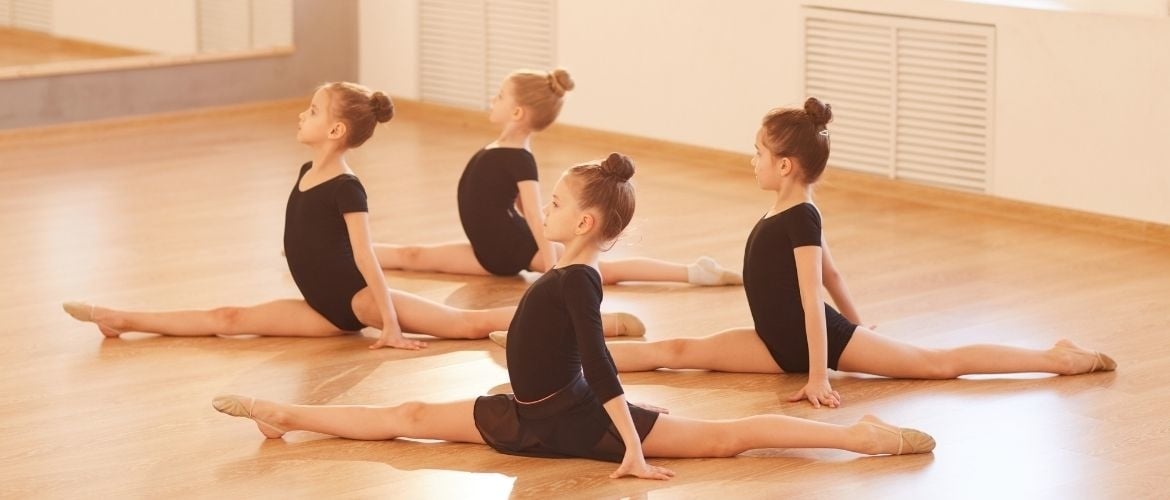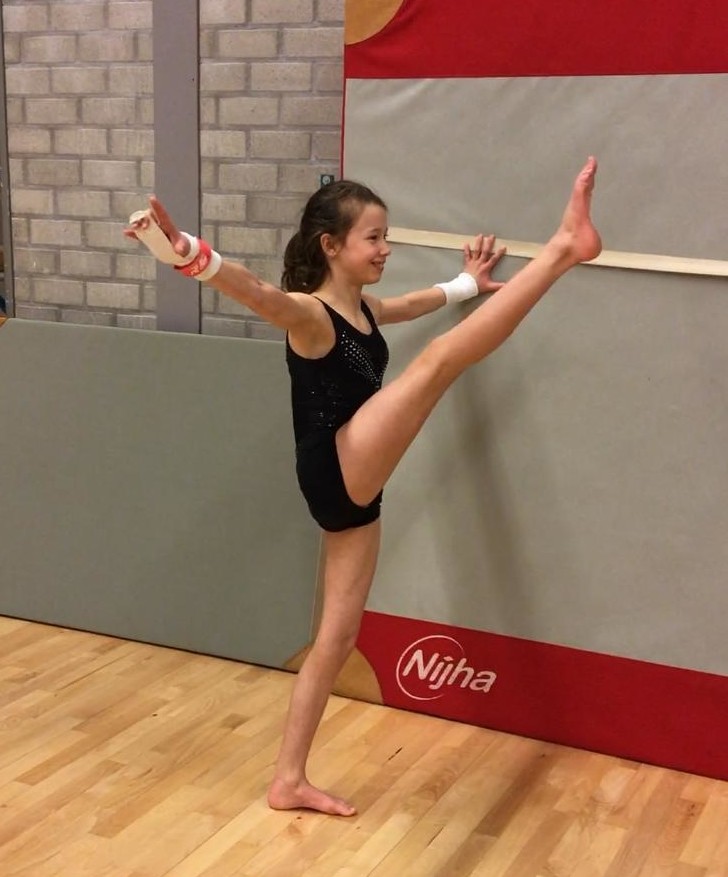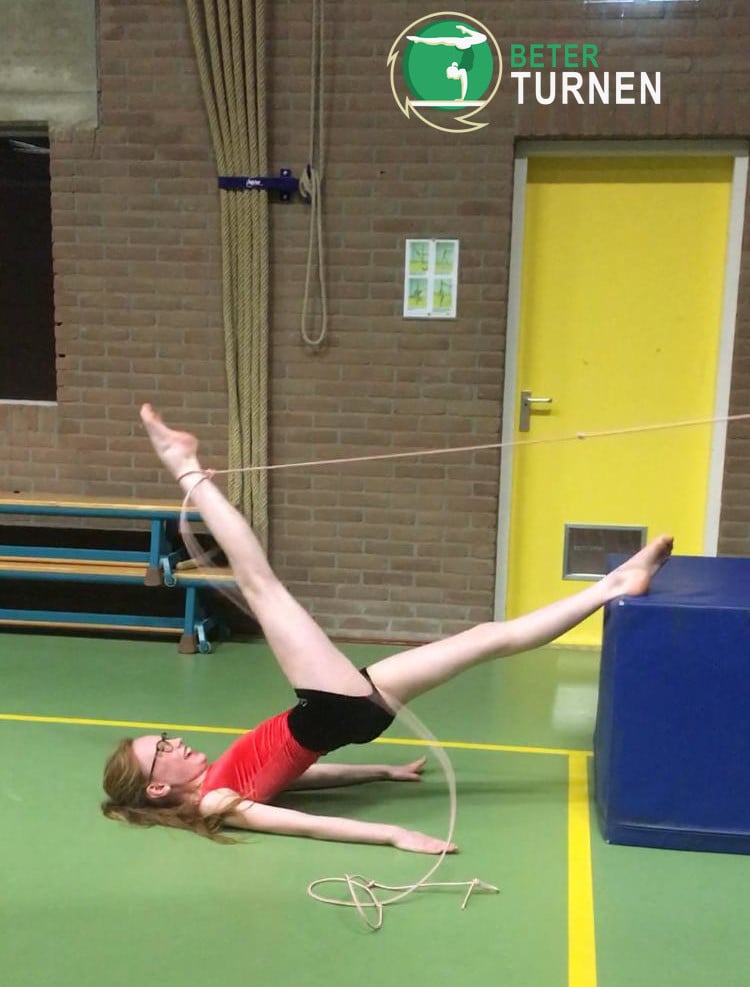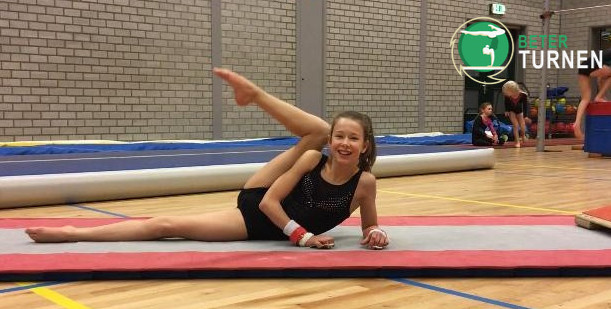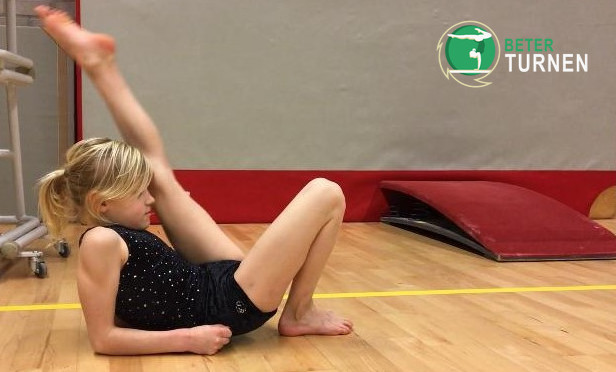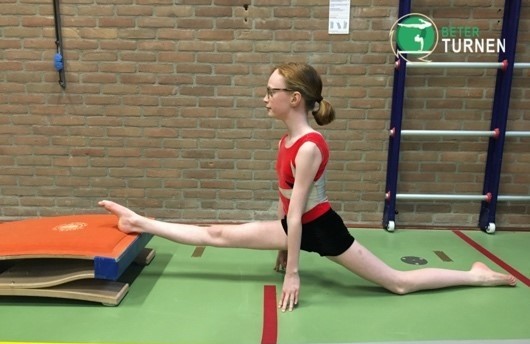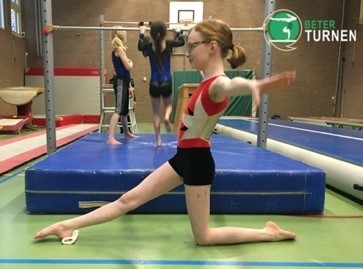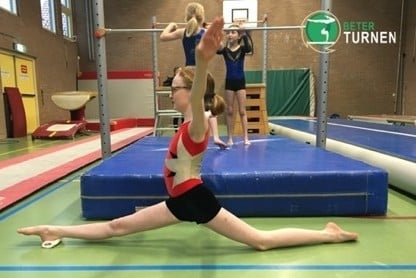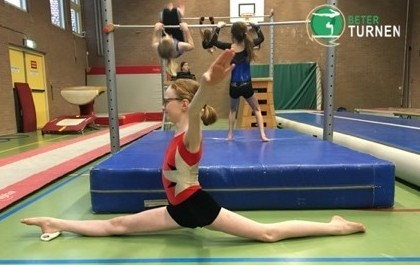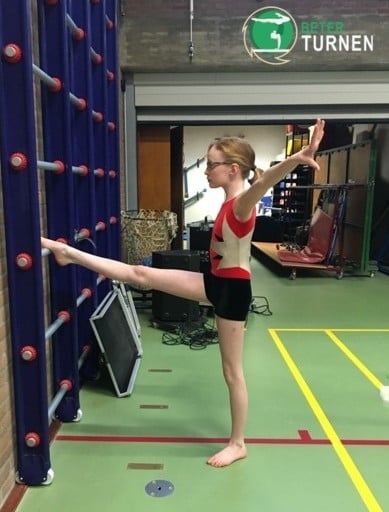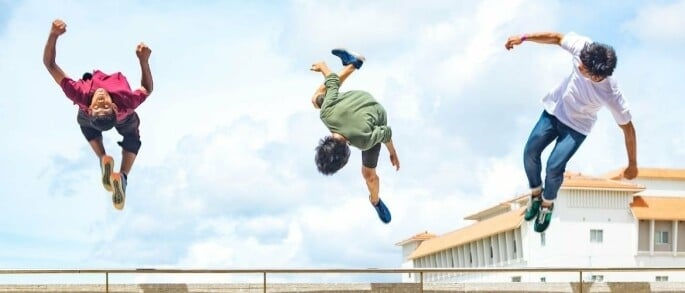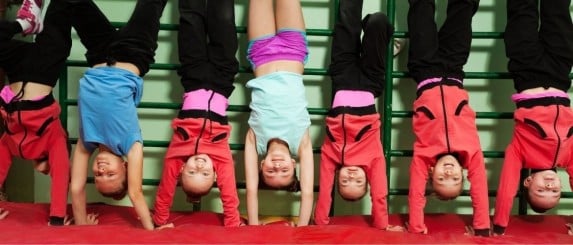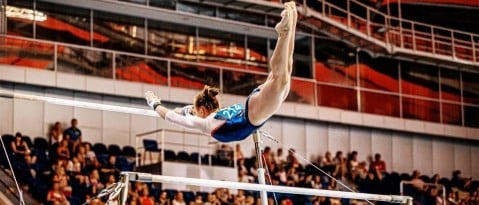In gymnastics, ballet, figure skating and even handball, mastering splits is necessary in order to perform certain elements and movements correctly. It’s also really cool to be able to do a splitset, whether you do one of the above sports or not. We from Gymnastics Tools will help you with the following tips to learn the splits!
What is a split?
Where exactly are we talking about when we talk about splits? What is the definition of the splits? A splits is a position in which you sit on the floor, with your legs spread 180°. You have one leg in front of and one behind your torso. You can therefore do splits in two ways. Both with your left leg and with your right leg. If you spread your legs 180° to the side of your torso, you are in split. Split is also an element that gymnasts like to master.
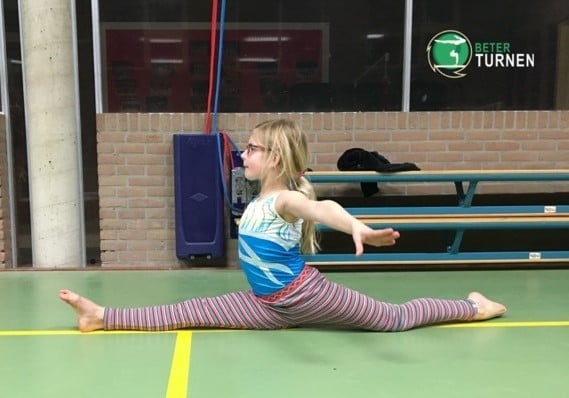
Agility to learn the splits
What exactly is flexibility? Flexibility is the range of movement that you as a person can control when performing certain movements. The anatomy of the joints, the length of the tendons and muscles involved and the nervous system all contribute to this range of movement. This means that flexibility, (hyper)mobility, is partly innate and partly learnable! By stretching, you can lengthen your muscles, thereby increasing your range of motion, and you will be able to do the splits a little further every time! This surely sounds like good news to some of us. The fact that you have absolute control over it often makes practising splits a lot more fun.
Warm-up
Before you start stretching, it is a good idea to warm up your body. If you are in the gym or gymnastics hall, walk a few laps to warm up. Are you going to do the splits at home? Then you could jump rope for a few minutes before stretching. A very effective way to warm up quickly!
Below, we have made a warming-up for you, which will warm you up well and effectively, so that you can then start practising the splits in a responsible way!
Active and passive flexibility
In gymnastics, we talk about active and passive flexibility. With passive flexibility you stretch your muscles in a static manner, for example by lifting your leg as far as possible while keeping your knees straight. You then hold this position for a few seconds. In gymnastics training it is wise to offer passive flexibility at the end of your lesson. Because stretching makes the muscles longer, your speed and jump power will decrease slightly. This would mean that running for pegasus or making a nice high jump on beam, for example, would be less successful.
With active flexibility exercises, you do this in a dynamic way. An example of this is, in the same starting position as above, repeatedly swinging your leg up as far as possible.
In gymnastics training, active flexibility is often practised on several apparatuses. Active flexibility is practised in all gymnastic jumps with leg spread on beam and floor. Active flexibility is also practised when practising acrobatic elements. Think about the cartwheel or the transverse on the floor. Here you are also actively swinging your legs towards the split or the splits.
An example of active flexibility in the gymnastics class:
Training a combination of active and passive flexibility will help you get as far as possible in splits. Here are some exercises.
Active flexibility exercises
| Leg swing: From a standing position, swing your leg up as high as possible. Keep your supporting leg and your swinging leg neatly stretched. | |
| Swing your leg as far up as possible while lying down, using resistance such as a rubber band | |
| Swing your leg back as far as possible to a standing position. Your hands are touching the ground. Try to place your hands as close to your feet as possible and keep both your swinging leg and supporting leg straight. | |
| Lie on your side and swing your leg up behind your head. Keep your swing leg bent at a 90-degree angle. | |
| Lie on your back and support yourself on your forearms. Swing your leg up as far as it will go, beside or behind your ears. |
Passive flexibility exercises
| Splits with your leg on an elevation | |
| Assume the position shown in the photo, supporting your foot on a wrist strap or a beanbag, slide as far as possible towards the ground and hold on. | |
| Leg-hold wall rack | |
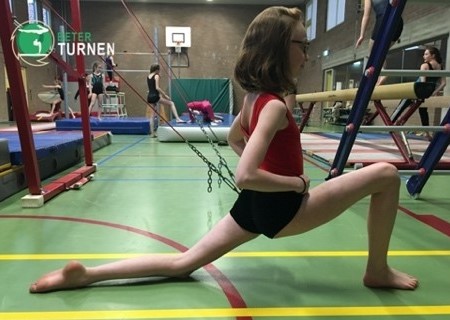 | stretching pass | |
 | Lying on your stomach heel to buttock |
How do you learn the splits?
- Make sure your muscles are well warmed up before you start stretching.
- Practise a little every day, repetition is the magic word!
- Stretch until you feel a certain stretch, but don’t go through your pain threshold!
- While doing the splits, let the knee of the front leg point towards the ceiling.
- When doing the splits, let the knee of the back leg rest on the ground.
- When stretching in splits, make sure not to twist your hips.
- Alternate between active and passive flexibility for optimal results.
Complete workout
Perhaps you find it more convenient to work with a complete workout out instead of individual exercises. We have also made that for you! In the video below, we show you a complete flexibility workout. We start with a short warming-up, and then we work on the passive and active flexibility. All exercises can be done at home as well as in the gym.
Learning the splits
Could you use some more exercises and workouts to learn the splits? Join our free 7-day Splits Challenge on Youtube! More than 2700 gymnasts have already participated in this challenge and learned to do the splits very quickly! Or check out all the exercises on the gymnastics platform.
How far have you got with practising the splits? Let us know in the comments!

